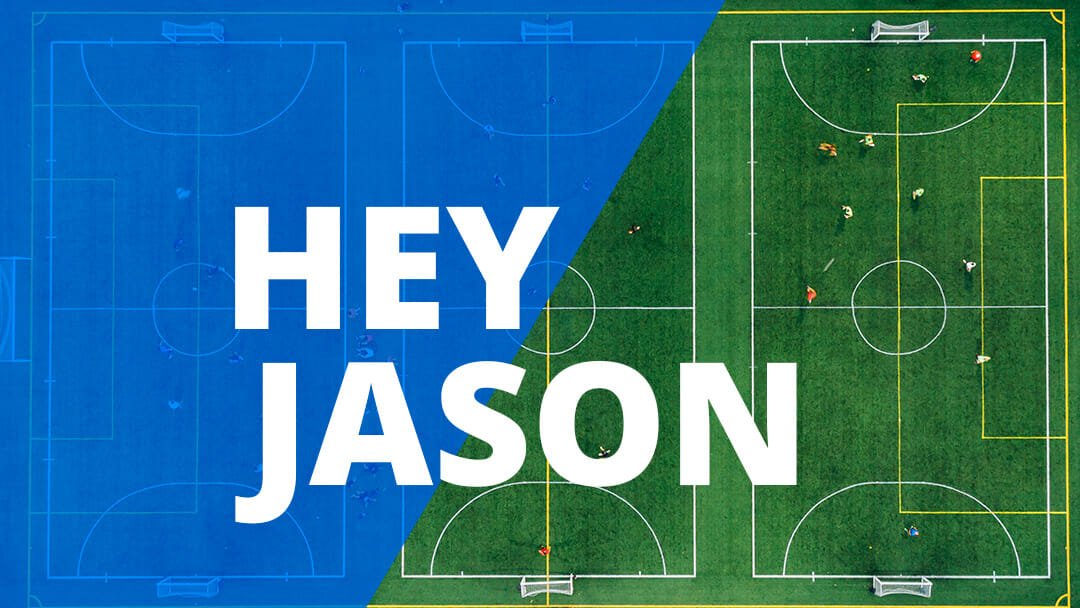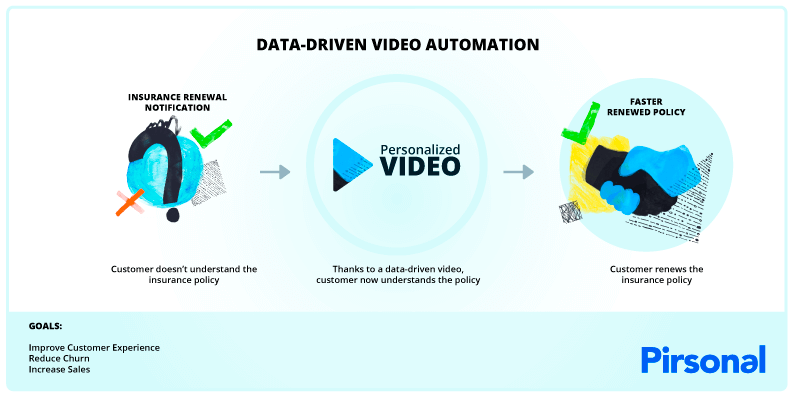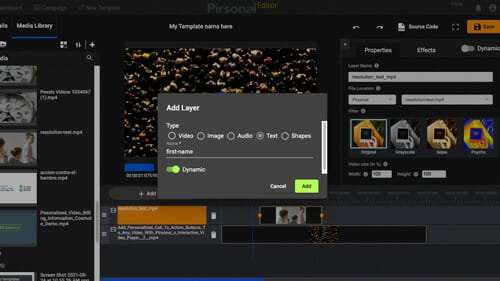Many people struggle with different types of disabilities, including vision problems, color blindness, and hearing impairments.
This is why making video content accessible to everyone, including people with disabilities is an important, ethical, and smart business strategy. It’s also a strategic and sometimes legal necessity.
Moreover, video content is a powerful marketing tool that can boost conversion rates more than other methods. That’s why 91% of businesses use videos to increase their marketing initiatives.
But what are the benefits of video accessibility, why is it important, and how to make your videos more accessible to engage a wider audience for your business?
What is Video Accessibility?
Video accessibility is the practice of creating video content, such as films, TV shows, music videos, and product reviews that is accessible to people who have disabilities.
The main goal is to let everyone enjoy your video content without barriers.
Video accessibility is beneficial for a large number of disabled people, including people with full blindness or vision impairments, deaf or with hearing impairments, or people with cognitive disabilities.
Accessible videos should include transcripts, subtitles, and closed captions. These features help people with hearing impairments or with dementia and other disabilities to understand the videos.
Video accessibility can serve as a way to boost your marketing initiatives. For example, captions help to increase video views. Recent statistics show that they can result in a 7.3% increase in YouTube video views.
Finally, video accessibility is a legal requirement in many developed countries, and not following the accessibility guidelines can lead to negative consequences for your business.
Legal Requirements for Video Accessibility
Video accessibility is an essential aspect of web accessibility. Developed countries like the United States mandate content creators and businesses to provide videos that are accessible to everyone. The Americans with Disabilities Act (ADA) provides detailed guidelines for video accessibility such as incorporating:
- Transcripts: Textual representation of audio content and any other non-speech content.
- Closed Captions: Text version of an audio accompanied with video.
- Audio Descriptions: Textual description of visual elements during breaks.
The ADA guidelines are based on Web Content Accessibility Guidelines (WCAG) that are accepted worldwide and ensure that digital content is accessible and inclusive.
For full accessibility, you may also need to perform a detailed website audit for accessibility compliance and promptly address any issues detected.
Remember that non-compliance could lead to lawsuits, financial losses, and damages to the business’s or personal reputation.
How Video Accessibility Helps You Rich Wider Audiences

Automated video with Pirsonal
Video accessibility enables you to interact with various audiences and improve the viewing experience for individuals with disabilities.
Different Audiences Need Accessibility
Video accessibility is important to reach wider audiences for your digital content be it a website, social media, personal or business content, etc.
To be able to reach a wider audience you need to keep in mind that different audiences may need accessibility, including:
- Deaf and Hard of Hearing Individuals
Video accessibility is important for deaf people and those who have hearing impairments. Due to their disability, they can not hear your audio, and video captions and transcripts help them to read and understand the content.
- Blind and Low Vision Individuals
People who are blind and have visual impairments use screen readers to understand digital content. Adding closed captions to your videos will help screen readers to make your videos accessible to them.
- Non-Native Speakers
Non-native speakers will skip your video if you don’t provide transcripts and captions as they rely on these means to grasp the content.
- Individuals Who Prefer Watching Videos Sound-Off
Don’t be surprised that 75% of people prefer watching videos sound-off on their mobile devices. If you don’t want to miss out on this audience, then you need to provide captions for each of your video content.
To make sure that your video content resonates with your target audience, including people with disabilities, you need to avoid creating generic videos.
Instead, say yes to personalized videos that help target individual contacts. With personalized video software like Pirsonal, you can automatically create these videos at scale.
Accessible Videos Have Increased Usability
According to the World Health Organization, there are 1.3 billion people worldwide who experience disability. Inclusivity of your video content on the one hand enhances the user experience for a wide range of people and increases the usability of the content on the other.
Videos with accessibility features are essential for everyone, not just those with disabilities. Having captions, transcripts, and subtitles makes it easier for everyone to watch videos, saving time and energy.
Accessibility Boosts SEO
It is not a secret that web accessibility improves user experience and user interaction, increasing the average time a user spends on a website. This can significantly boost your website’s search engine optimization (SEO) efforts bringing more traffic to your website and improving your search engine rankings.
Adding captions, tags, keywords, and transcripts to your videos makes users view your video content longer and improves your SEO. What’s more, accessible video content brings more backlinking opportunities and higher conversions.
Accessibility is Key To Inclusivity
Video accessibility is key to establishing a welcoming environment where everyone can engage and enjoy the same benefits. By designing personalized video content with accessibility in mind, we can help people with disabilities, breaking down barriers and providing equal opportunities for all.
Best Practices for Accessible Videos
Here are the best practices you can use to create accessible videos that can help you reach a wider audience, boost engagement, and drive business growth.
Provide Captions and Subtitles
As mentioned above providing captions and subtitles is an essential component of video accessibility.
Video captions and subtitles are mainly displayed at the bottom of the video, showing the spoken words in textual format. Captions also cover the background music, noises, and other sound effects. This lets people with hearing impairments understand better what’s happening in the video.
Captions and subtitles can increase viewer engagement and retention.
Furthermore, use localization to customize the video content for various languages and cultures. This can be achieved through automated video software such as Pirsonal.
Provide Audio Descriptions
Audio descriptions are like alternative text (ALT text) but for videos instead of images. They present an explanation of the visual and nonverbal components of the video.
Audio descriptions allow people with visual impairments not to miss any important information.
Audio descriptions can also be beneficial for students who can take notes while listening to lectures.
What’s more, these descriptions allow for adding more out-of-content information making the video more informative for the audience.
While adding audio descriptions it is important to avoid generic phrases such as “that’, “here”, and “there”. Instead, describe what you are doing or seeing in the video in detail.
Use an Accessible Media Player
Another important aspect is using accessible media players for your video content.
Make sure to use video players that simplify the process of including, modifying, formatting, and synchronizing captions to meet accessibility requirements.
However, the process of modification and formatting can take ages. The most straightforward way is to find an interactive video player that can automate the process.

Pirsonal’s interactive video player with personalized call-to-action – Pirsonal Player
With an interactive video player like Pirsonal Player, you can automatically add personalized calls-to-action to your videos, ensuring that not only the video content but also the interactions, adapt to the needs of every viewer.
Provide Keyboard Compatibility
All the essential functions of your videos such as play, pause, and rewind should be operated only with a keyboard. Additionally, ensure that volume adjustments are accessible via keyboard to allow hearing-impaired individuals to manage them independently.
Avoid Using Autoplay on Videos
Autoplay videos are mostly annoying for the viewers. According to recent statistics, 80% of respondents had a negative reaction to video ads with autoplay.
Autoplay can be a serious challenge for people with disabilities who may face difficulties in reading the content while the video is playing non-stop.
In cases where you can not avoid video autoplay, provide a pause button or an alternative method for users facing data, bandwidth, or cognitive limitations to halt playback smoothly.

Improved customer experience and faster policy renewal with personalized videos
However, in one-to-one marketing, video personalization often calls for autoplay. Pirsonal’s API and integrations allow you to specify when this feature should be activated for each contact, enhancing the potential impact of your video strategy. Furthermore, when autoplay is enabled, videos are automatically muted.
Accompany Videos by Accurate Transcripts
Transcripts offer a written representation of the audio content of the video. They help people with hearing impairments to understand the dialogue and other audio content in the video. The more accurate the transcripts the more accessible the video.
Transcripts are also important for non-native speakers who may have difficulties understanding the accent, vocabulary, and pronunciation in the video.
Provide Screen Reader Compatibility
Many people with disabilities like blind people or those with visual impairments use screen readers to understand digital content.
A screen reader is a special tool that verbally reads texts and other screen elements. It is important to ensure that your videos have precise transcripts for screen readers to effectively convey information to users.
Consider Color Contrast and Brightness
Color contrast and brightness are like the peanut butter and jelly of video content.
Having the right contrast and balanced brightness can make a world of difference for users with visual impairments, including those who have color blindness. The Web Content Accessibility Guidelines (WCAG) recommend a color contrast ratio of 4.5:1 to ensure that people with low vision can follow what’s happening on screen.
Adjust the brightness to avoid too gloomy scenes or blindingly bright ones.
If you use the right mix of colors and brightness, you’ll make your video content pleasant to everyone. This not only benefits people with visual impairments but also improves the clarity and readability of the content for all users.

The Pirsonal video editor can help you create personalized video templates with the perfect contrast and brightness in a snap. Say goodbye to hours of manual work – simply streamline your video creation with the real-time automation and speedy rendering of Pirsonal.
Conclusion
Video accessibility is what can help you reach wider audiences and drive your business.
Once you follow the accessibility rules, use the best practices, and pick the right tools, you can create videos that will attract a huge audience and boost your business.
Pirsonal is here to help your business to create hyper-personalized and accessible video content, reach wider audiences, generate outstanding customer experiences, and ensure sustainable business growth.
Looking to boost viewer engagement with tailored video content? Get in touch with us now! We will assess how personalized and automated videos can effectively captivate your audience at scale, enabling you to accomplish your business goals.

